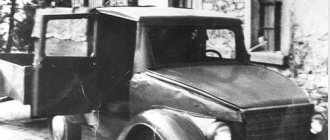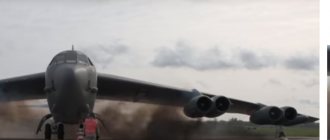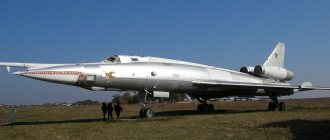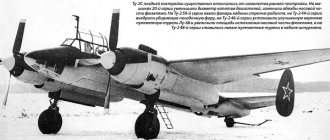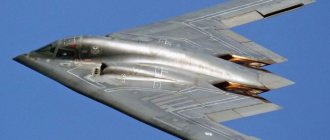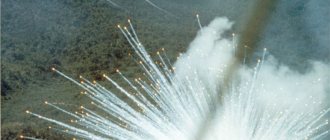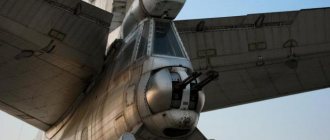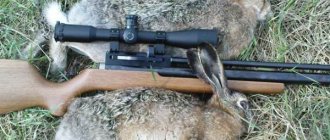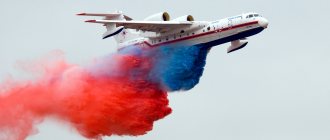Preliminary tests
In November 1939, Professor Hertel, through the planning department of the design bureau, presented a gigantic test program for the Ju 288. This program involved almost the entire design department of the Junkers company, which was the largest among German aircraft manufacturing companies, in testing for months in advance. Professor Hertel knew that time advantage over competitors could be the deciding factor in winning a contract. The preliminary testing program, for example, included pressurized cabin testing, low-temperature testing of rubber products, lubricants, oils, flutter studies, wind tunnel testing and water towing. In total, the plan included 140 separate points.
At the time of the program's release, Junkers planned to fly the first prototype Ju 288 V1 in August 1940. Until this point, the company planned to test a number of new components in the air, for which several Ju 86 and Ju 88 aircraft were converted. For example, Ju 288 cockpit side blisters were installed in the rear fuselage of the Ju 86 V31; Later, the Ju 86 V31 prototype was used to test Hirth equipment and units. Then Ju 86 P/0294 was connected to the tests. On the Ju 86 P V28, a pressurized cabin was systematically tested with equipment designed for installation on the Ju 288.
in March 1940, a prototype Ju 288 V1 prototype was made, which corresponded to a later version of the requirements of the General Staff. In the background you can see an early version of the four-seat flight deck with the lower part protruding under the fuselage. The area where the model was assembled was strictly isolated by partitions from the rest of the workshop, and entry into this fenced-off area was allowed only to personnel who had the appropriate clearance
The Ju 88 V1 prototype was used to test the rapid fuel release system, test elevators and study visibility conditions during rain. A mock-up of the Ju 288 cockpit was installed on the Ju 88 V2 prototype and then the operation of the ailerons was tested using a jet spray and a comb chopper. The Ju 88 V5 prototype was fitted with a mock-up of the Ju 288 cockpit and a twin-fin tail unit. Tests were then carried out on the evaporative cooling system, the overpressure liquid cooling system, the twin propeller spinners and the airbrakes for dive flight. On the Ju 88 V8 and Ju 88 V16 prototypes, rudders were tested, on the Ju 88 V 17 prototype, the on-board equipment was tested, and on the Ju 88 V23 and V42 prototypes, elevator trimmers with the pin axis moved forward were tested.
Design development process
In May and June 1940, representatives of the RLM and the Rechlin 1 (Rech 1) test center carried out several inspections of the mock-ups, during which the main attention was paid to the crew accommodation conditions, weapons, bomb release system and sights. Various arrangements of equipment and equipment were also studied.
When all these issues were resolved, RLM allowed production of all structural components to begin.
The fuselage width of the Ju 288 V1 prototype was only 99 cm. After the first flight, the design of the aircraft was significantly changed
By the end of June 1940, all working drawings for the prototypes from Ju 288 V1 to Ju 288 V3 were sent. For the Ju 288 V4 prototype, which was considered the standard for mass production, additional design development was carried out based on the results of the inspection of the mock-ups.
In the summer of 1940, Junkers began intensive collaboration with Zeiss, Jena, and Rheinmetall-Borsig on the development of sights, periscopes and defensive stops. Also by this time, it became clear that the first prototypes of the Ju 288 type aircraft would not receive Jumo 222 engines as planned. The designers had to make changes to the working drawings again, and BMW 801A engines were installed on the prototypes from Ju 288 V1 to Ju 288 V5 , which at that time were the most powerful aircraft engines then available.
the first Ju 288 V1 prototype shortly before production was completed; October 1940
Ju 288 V1 prototype in hangar; October 1940. The aircraft is equipped with BMW 801A engines. For safety reasons, prior to installation on the Ju 288 V1, these engines powered the prototype Ju 88 V25, which spent 10 hours in the air with these engines.
First inspection of the layout
On November 29, 1939, a high-level meeting was held in Dessau, at which Udet, Lucht and Reidenbach were present from RLM and Koppenberg, Hertel and Thiedemann from Junkers. During the meeting, participants viewed the first mockup presented, which largely met the RLM requirements. It was assumed that difficulties would arise only with periscopes and side drop-shaped blisters protruding from the cockpit. Because of this, Junkers was tasked with exploring other solutions to the problems encountered, which included a four-seat cabin in which two crew members could sit side by side. Ernst Udet issued an order for the construction of 20 prototypes and launched design work and preparations for organizing production. In accordance with the new requirements of the General Staff, which took into account the experience of combat operations and related to weapons and equipment, the size of the aircraft had to be increased. The middle part of the fuselage received more frames, and the wing span increased to 18.35 meters in order to keep the specific wing load within limits. Then, to improve the firing sectors of defensive weapons, the developers decided to switch to a two-fin tail with washers installed at the ends of the stabilizer. As a result, at the beginning of 1940, general requirements were determined, and, finally, it was possible to begin detailed design work.
mockup of the first version of the Ju 288 bomber. In November 1939, it was inspected by Udet, Lucht and Ratzdenbach
Brunolf Baade (1904-1969) was appointed head of development of the Ju 288, Johann Haseloff was responsible for the fuselage, Fritz Freundel led the development of the load-bearing surfaces. Also important in the development of the Ju 288 were Erich Heinelt, who was responsible for the chassis, and Gustav Steuerlein, who was responsible for the defensive weapons. Important information for the creation and further improvement of the machine was provided by the statistical office, headed by Karl Aikele, Philipp von Doepp, who was responsible for wind tunnel testing, and Oskar Nissen, who headed the research department.
Flight testing was largely in the hands of Junkers chief pilot Flugkapitän Siegfried Holzbaur and weathervane Captain Hans-Joachim Matthies. Then pilots Peter Hesselbach and Hans-Joachim Pancherz, as well as Alfred Funke and Rudolf Gottschalk took part in flight tests. Flight test engineers Karl Wendt, Werner Joop, Alfred Bormann, Johannes Gödecke and Eugen Jacoby took part in the tests. Junkers had its own flight testing division, which consisted of two departments: flight and flight mechanics, headed by Reginald Schinzinger and Dr. Hans W. Kaul.
End of the first Ju 288 V1 prototype
On March 2, 1941, after a two-hour test flight, weathervane Captain Siegfried Holzbaur lowered the landing gear during landing. Suddenly there was an explosion, after which the left wing of the plane caught fire. Due to the low flight altitude, the pilot could not jump out with a parachute, and he could only try to land the plane. Flight engineer Werner Joop activated the cockpit canopy release mechanism. After this, the entire cabin suddenly became filled with smoke, as a result of which Holzbaur could not see the instrument readings.
What happened next was somewhat reminiscent of an instrument landing. The first to jump out of the plane flying at a height of four meters at a speed of 160 km/h was radio operator Hermann Kalkofen. Result: shoulder dislocation and bruises. Then flight engineer Werner Joop jumped out of a Ju 288 V1 rolling on the airfield. When the plane stopped, Holzbaur jumped out of it and, headlong, began to run as far as possible from the burning plane. The factory fire brigade immediately arrived at the burning aircraft and began extinguishing the fire. At that moment the cockpit broke off and seemed to bow down. Holzbaur and Joop suffered carbon monoxide poisoning, but were otherwise fine.
Ju 288 V1 prototype in Dessau after a fire on 2 May 1941. The picture clearly shows the changes made to the design of the aircraft after the first flight
The cause of the accident was quickly found. The fuel line of the fire shut-off valve broke off and the fuel from this line ignited, hitting the hot exhaust pipes of the engine. Junkers received compensation in the amount of 500,000 Reichsmarks from the insurance company Mivermi. The damage to the aircraft was 80% and it was not possible to restore it. The insurance amount for the Ju 288 V1 prototype was 800,000 Reichsmarks.
Changes in project management
Simultaneously with the invitation to participate in the competition, a decisive change occurred in the project management. Professor Herbert Wagner, who had been relatively unsuccessful at Junkers as head of the design department, left the company, as did the head of the design department, August W. Quick. Herbert Wagner went to Henschel, and August Kick to the German Aviation Research Institute (Deutsche Versuchsanstalt fur Luftfahrt; DVL). Junkers was able to obtain a new head of project management. He became Heinrich Hertel (1901-1982), who left the Heinkel company due to disagreements with its leader Ernst Heinkel. Hans Gropler (1909-1969) became the new head of the design bureau. Thus the Ju 288 program became Heinrich Hertel's first big test at Junker. Hertel responded to this challenge with his characteristic energy, and soon at Junkers he received the nickname “Heinrich the Lion” (Heinrich der Löwe).
It should be noted that the head of the company's design bureau, Ernst Zindel, did not take part in the entire development of the Ju 288. Under the leadership of Ernst Zindel, the Ju 86 medium bomber was created. Although this aircraft was put into mass production, its design was outdated in comparison with competitors He-111 and Do-17. The disappointment with the defeat of the Ju 86 by the head of the Junkers company, Koppenberg, was so strong that in the future Ernst Zindel no longer took part in the company's new developments. Therefore, designers Alfred Gassner and his friend Heinrich Evers were specially called from the USA to work on the Ju 88. At the same time, Alfred Gassner, while working at Fairchild, did not distinguish himself with particularly advanced projects.
Further tests
In addition to a large number of other tests that it is not possible to describe due to lack of space - for example, experiments on ensuring the protection of flaps from changes in speed pressure and the use of a comb breaker as an additional means of lateral control - the company's engineers tested the following on the Ju 288 V2 prototype called control path converter (Steuerungswegwandler).
In early prototypes, pilots found the longitudinal and yaw control systems to be more sensitive when the deflecting surfaces were in neutral. Minor deviations of the steering wheel or pedals made it difficult to fly smoothly in the direction of the target. To improve, a so-called control path converter was created and, with the same deflection of the control system elements in the middle position, the ratio of the movement of the pedals or steering wheel to the movement of the deflecting surfaces was increased to 2:1. This measure made it possible to obtain a significant improvement in aircraft control during a long flight, and it was decided to use this system in mass production.
When the Ju 288 V2 prototype landed at Dessau airfield on July 20, 1942, and skidded off the runway, the landing gear was broken. During the ensuing repairs, the B-type defense mount and the Junkers-developed FA 15 remote weapons control system were installed. The aircraft was delivered to the Tarnewitz test center in November. There is information that the Ju 288 V2 prototype remained at this test center until March 1943. After the return of the Junkers company, this aircraft was no longer flown, and in December 1943 it was scrapped.
On July 20, 1942, during rain, Holzbaur's prototype Ju 288 V2 rolled off the runway at the Dessau airfield, resulting in a broken landing gear. On the right wing console you can discern a pitot tube that served for continuous control of flap adjustment
a reference to Henry the Lion (German: Heinrich der Löwe, 1129, Ravensburg, Tübingen - August 6, 1195, Brunswick) - a monarch from the Welf dynasty, Duke of Saxony in 1142-1180 (under the name Henry III) and Bavaria in 1156-1180 ( under the name of Henry XII)

